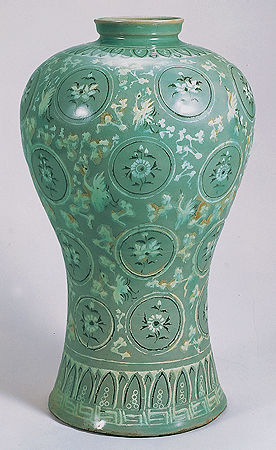
|
Koryo
Celadon is a cultural heritage
that we should be very proud of, as it takes a significant
position mot only in Korean porcelain history, but in
world porcelain history as well.
Koryo Celadon is made by applying Jangsuk oil which
contains 1-3 % steel to a pot or dish made of soil, that also
contains some steel, and then is baked with sulphur salt
so that the steel in the pot/dish turns a greenish-blue.
Koryo Celadon was first made in
the 9th or the 10th century in
Korea.
After going through many improvements
and new developments, there were more varied types at
the end of the 11th century with more unique production
methods for design, baking and pattern development.
Large
porcelain kilns formed in Kangjin
are a form of government
owned kilns.
|